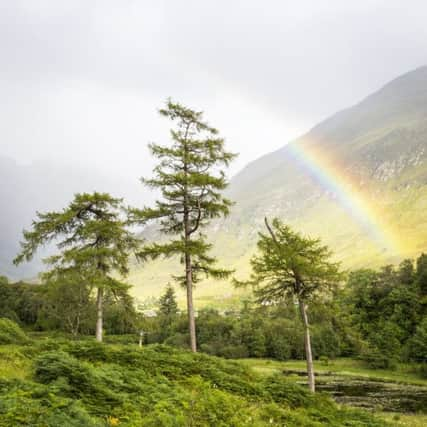Bid to save last '˜granny' pines with links to Caledonian Forest


A bid has been launched to save the nation’s last remaining ancient Scots pine trees with ancestry dating back to the last ice age.
Conservationists plan to restore 50 areas of struggling native woodlands, mainly made up of lone ‘granny’ pines that are over 200 years old.
Advertisement
Hide AdAdvertisement
Hide AdThese geriatrics are some of the last remaining survivors of the iconic Caledonian Forest, which once covered 1.5 million hectares of the country.
But experts fear these historical specimens will die out, due to a lack of new seedlings to replace them. And if they disappear, some of Scotland’s best loved indigenous wildlife could also be lost.
The Scots pine has been designated the country’s national tree. It formed the backbone of the country’s native woodland, alongside birch, rowan, aspen, juniper and other species.
The forests are also home to many rare plants and animals, some of which are found nowhere else in the UK.
These include the critically endangered capercaillie, red squirrels and crossbill.
Conservationists at the charity Trees for Life, which is based near Loch Ness, have already secured £150,000 of funding towards an ambitious restoration project from the Esmée Fairbairn Foundation, one of the largest independent funding bodies in the UK.
Now they have mounted an appeal to raise a further £20,000 in order to start the regeneration work.
“The Scots pine is Scotland’s national tree and symbolises the Caledonian Forest – but the last fragments of these ancient pinewoods are dying,” said Trees for Life chief executive Steve Micklewright.
Advertisement
Hide AdAdvertisement
Hide Ad“Without action, the chance to bring back the wild forest could slip away forever, with only the skeletons of these special trees revealing where a rich woodland once grew. We are determined to ensure these trees are not the last generation of Scots pine in these places.
“This project is one of our biggest and most crucial initiatives ever, and every donation will help save these precious fragments of our natural heritage.”
In total, only some 42,000 acres of the original Caledonian pinewoods remain.
These are split into 84 fragments and spread across a wide area of Scotland, from Loch Lomond, northwards to near Ullapool and eastwards to Glen Ferrick.
Some of these have been largely restored, but Trees for Life believe at least 50 are declining and at risk of vanishing within a generation.
Part of the problem is heavy grazing by deer, which eat new seedlings before they get a chance to grow. The forest fragments are also isolated from each other, which is bad news for dependant wildlife.